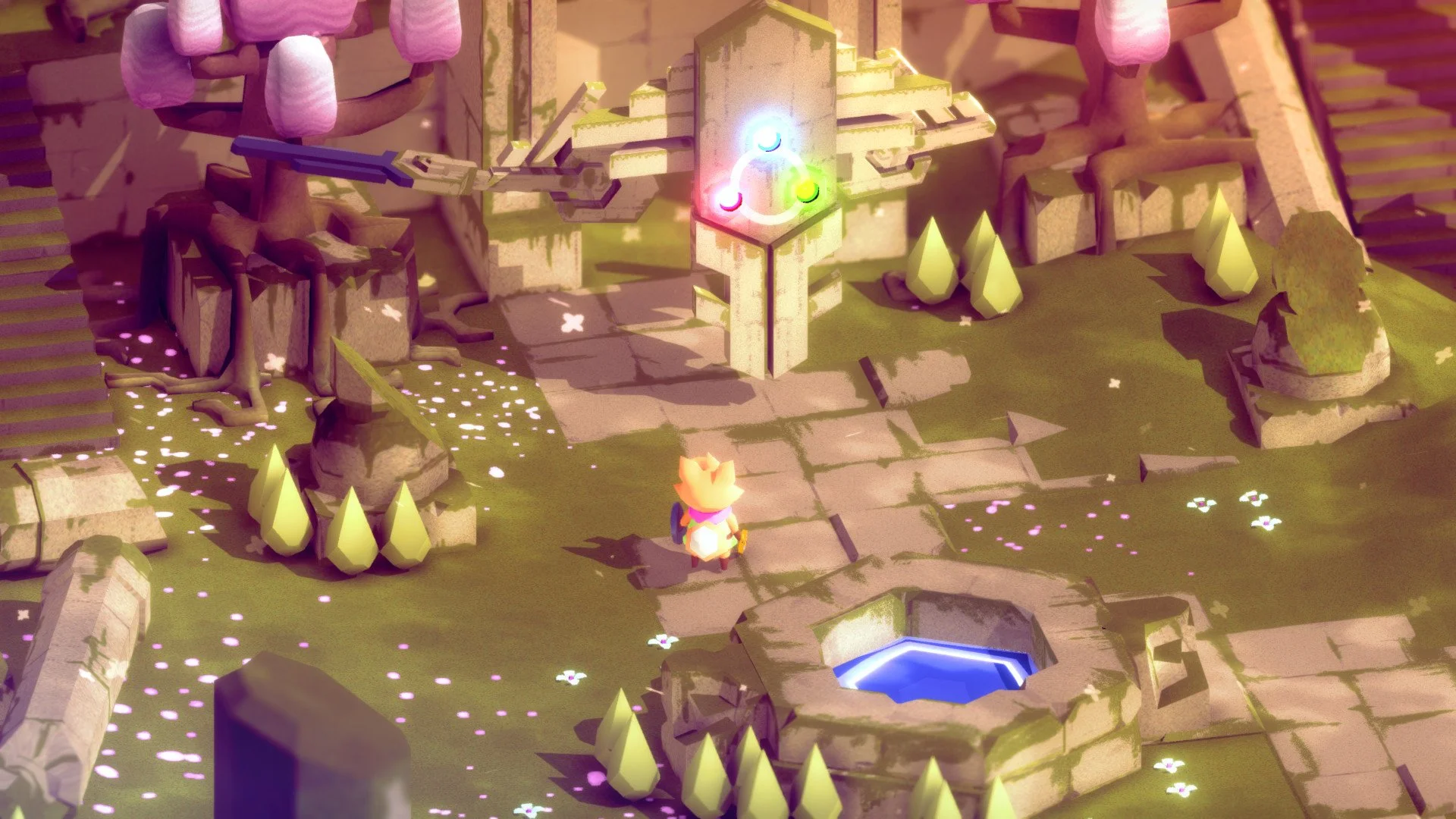Should the Rules be a Puzzle? Thoughts on Tunic
Blake Reno, Contributing Editor
I enjoyed Tunic for most of my time with it. It’s cute, it’s got a soundtrack that’s easy listening (what the kids call “lo-fi”), and it has simple controls. It is an isometric game that controls like a combination of Zelda and Souls (much like another indie title, Death’s Door) but adds a Fez-like sense of geometry to finding secrets and pathways. What’s not simple about the game is the obfuscation of everything that needs to be accomplished to make progress in it. The collecting and assembling of a virtual instruction manual that hearkens back to the manuals for NES and SNES games is a wonderful mechanic that gives gaming veterans a huge dose of nostalgia and newer gamers a lesson in videogame history. While this mechanic is in theory an interesting and original mechanic, it’s also my biggest frustration with Tunic: it erects a fundamental barrier to playing the game.
The controls are easy enough to figure out. You can test them in the overworld. But simple game mechanics are placed behind a wall of intentional obscurity. The in-game manual’s pages are scattered throughout the world. It’s possible to miss them—I finished the game with 7 pages missing. The issue with this is that it presents a huge barrier to any player who wants to enjoy the game to the fullest. One could see these pages as a “carrot” mechanic, beckoning the player to further explore the game world. There are tons of hidden things in Tunic, often in places that aren’t completely visible. This obscurity recalls NES and SNES games, but unless you have previous experiences with these games, it can be incredibly difficult to access basic information about the game’s mechanics (again, since these mechanics are hidden in the manual).
Even if one finds the manual’s pages, it can still be like bashing one’s head against a wall to understand aspects of the game. The pages are written in an in-game language and there’s no in-game translation. There are some English words and some pencil-marks (as if you had marked up the manual yourself), but most of what the player has to go on are pictures and arrows. Some things are made clear, for example, that the “dodge” has invincibility frames that begin and end when the little dirt cloud the hero kicks up appears and vanishes. But things that should be simple, like how to increase your stats (I didn’t figure this out until just before the first major boss), what certain accessories do, and where to go next were almost incomprehensible for me. I felt as if the manual was mocking my having been born too late for the 8- or 16-bit golden age.
I like challenging games, especially challenging puzzle games. I’ve played and enjoyed Baba is You, though I admit I’ve only finished a handful of levels. But Baba is You makes its rules legible and it rewards experimentation. The manual is really the only “puzzle” in Tunic, so if you can’t deduce what it’s trying to tell you, there are no other puzzles to solve. Unlike LEGOs, where the instructions are built into the blocks themselves, Tunic has no intuitive systems: you either understand the developer’s pictures and diagrams, or you don’t. As much influence as Tunic takes from Zelda, one of the key conventions of that franchise are simple puzzles that make you feel smart. In Ocarina of Time’s tutorial dungeon, Inside the Deku Tree, they teach you that fire from torches can be carried by wooden items like the Deku stick. A few dungeons later, when Link can no longer use Deku sticks, the arrows shot by the fairy bow serve as a functional replacement and the game prepares the player to think this way. In contrast, Tunic’s manual is a hard barrier to entry. There’s no logical progression or difficulty curve that takes you from incomprehension to knowledge in an incremental manner. Tunic simply drops the barrier in front of the player. You get it, or you don’t.
Returning to the Zelda influence, however, it’s arguable that Tunic’s developers may have wanted the player to talk with other people online to help them understand or find secrets. If this is the case, it is an influence from Shigeru Miyamoto’s idea that players would talk to each other about secrets in the original Legend of Zelda. The major difference, of course, was that TLoZ was popular long before the world wide web connected everyone in the world. There is a stark difference between talking to friends about where secrets are and what things in the manual might mean and taking 5-10 seconds to go to Google and have all the answers right in front of you. The major difference is that talking to friends about a game makes it a shared experience, enriching the friendships built around a hobby; finding answers on the internet bears no reward when you’re communicating with nothing but avatars and usernames.
Ultimately, Tunic is a cute Zelda/Dark Souls hybrid where the true barrier to entry is the difficulty of understanding the basic rules of the game. The problem with trying to explain certain mechanics with only pictures is that you either get it or you don’t. One of the most common complaints I’ve seen online about games that contain puzzles is “You have to know what the developer was thinking.” And I would put understanding Tunic’s manual under that umbrella. It wouldn’t be the worst thing in the world if the manual were just about the story or optional advanced game mechanics, but instead it’s a barrier from the very beginning, a puzzle with only the barest hint of a clue.






